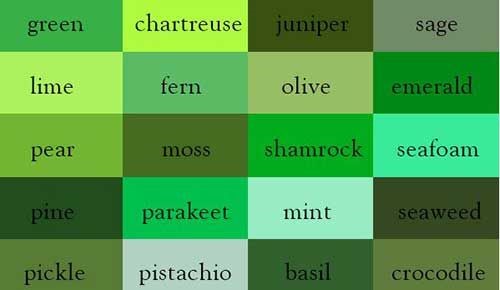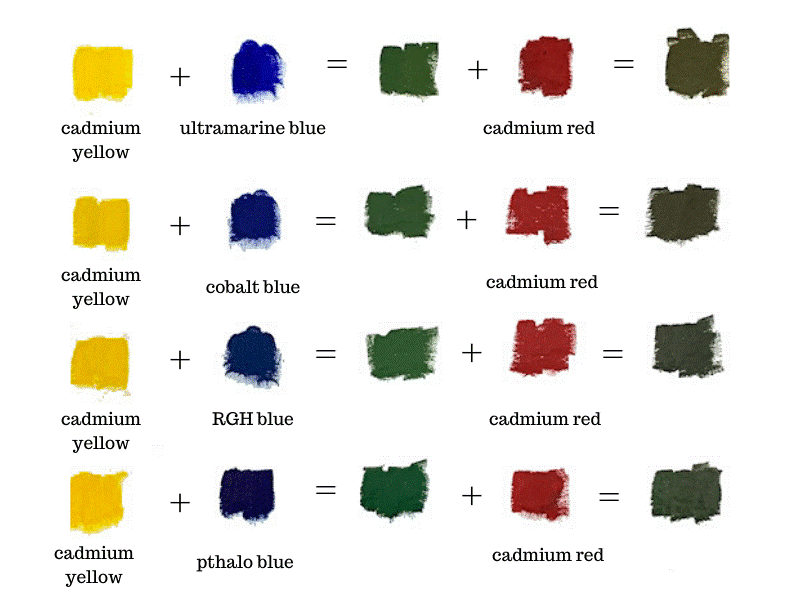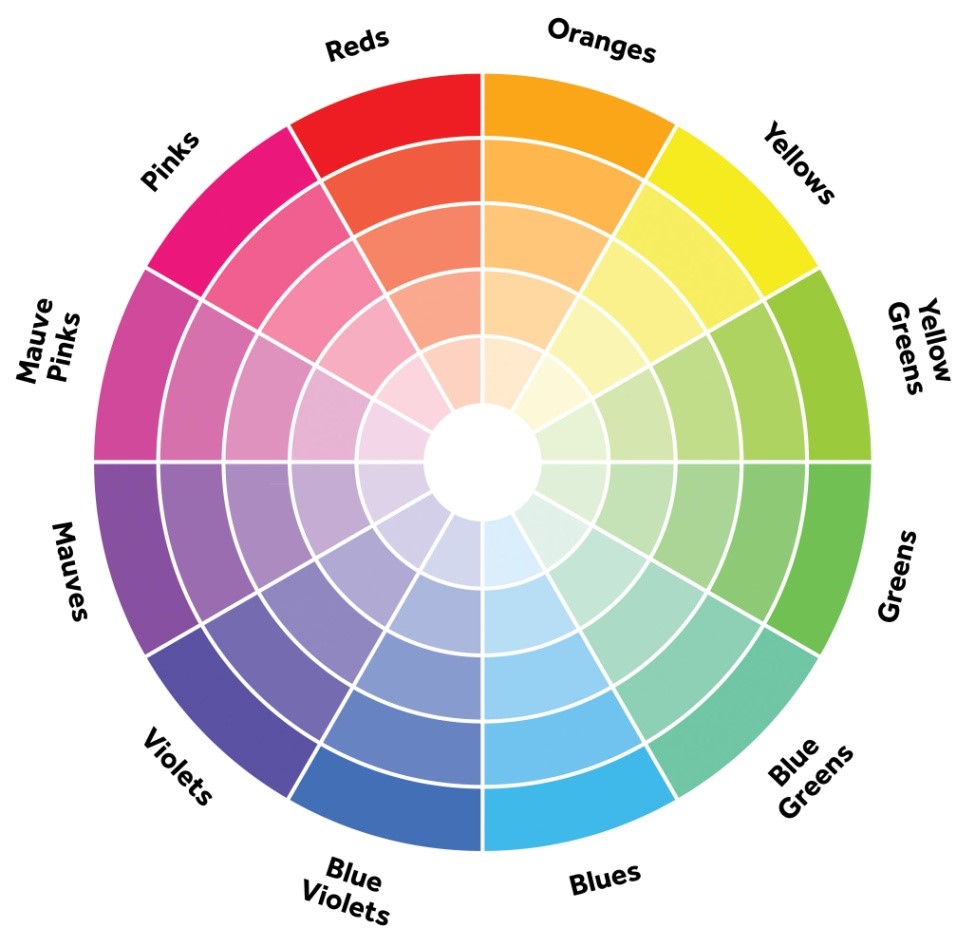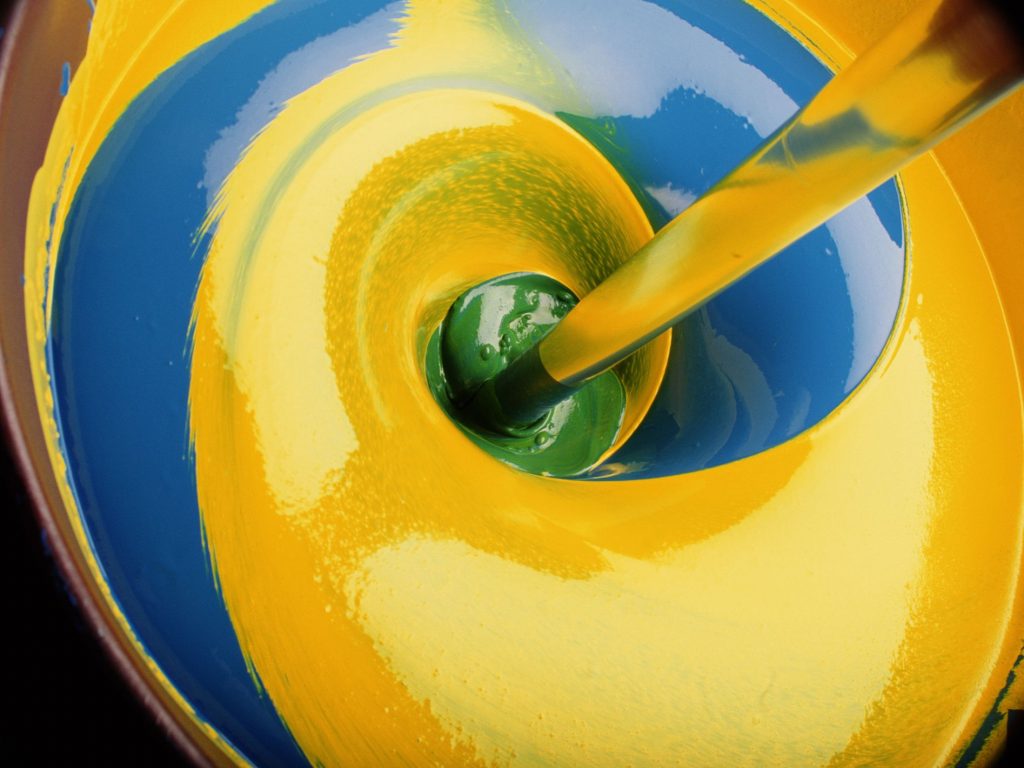For every artist out there, finding the right color at the right moment is a big deal. Sometimes you run of color, and sometimes you do not get the right shade, and when it comes to green and what colors make green, it can be a tricky topic but do not worry, we got you covered.
Whether it is for your piece of art or for anything else for which you need to find the perfect green, check out this detailed guide on how to mix green and get to know about what colors make green, how you should mix it, the precautions that you should take and everything about making green.
Basics of Mixing Green

The first step of mixing green in something that we learn in Kindergarten. Mix blue and yellow, and you get green, and that’s obvious, right? That is how mixing colors work if you follow the color wheel.
If you mix two colors from the color wheel, then the resultant color is between those two colors on the color wheel. Simple
However, it is not as easy it sounds. Starting from bottle green to emerald green and olive green, there are more shades of green than you can count on your finger, and that is what makes the process of mixing green a little tricky.
Here the real question is not “what colors make green?” It is yellow and blue, we already know. The question is, what shade of blue and yellow should you mix to get the shade of green that you desire.
So, let us talk about the different ways in which you can manipulate green.
How to Make Lighter Green Shades?
Let us start with how and what colors can make green lighter. The easiest way to do that Is mixing a darker shade of green with white.
So, in the beginning, you can stick to that. As you master mixing colors, go ahead and try to obtain a lighter shade with yellow.
For this, take a portion of green on your mixing plate. Then take a tiny drop of yellow (preferably cadmium yellow) and mix it with the previously taken portion of the green.
Use your brush to mix the two shades and check the results slowly. If you are looking for an even lighter shade of green, then take a little more portion of cadmium yellow and mix it with the previous green-yellow mixture.
However, be careful that the portion of yellow does not exceed the portion of the green. In a case of over-saturation like this, your resultant color will have a more yellowish tone than green, and you certainly do not want that to happen.
Next, when you master mixing green with both white and yellow, then do not stop right there. You are an artist, so open your heart to experimenting with different shades.
Try the other lighter and pale shades and see what results come and what new green shade you get.
How to Make Darker Shade of Green?
Now that we are done with light shades of green, let us talk about dark shades of green. Again, just like the lighter shades, if you ask what colors make green dark, there are a few options.
Now, an amateur might say that the easiest way to darken your green is to use black, but, in that case, all dark shades of your green will look the same, and your art will look dull.
So here is a quick solution to that. Our top 4 colors used to make your green darker are- ultramarine blue, dark purple, phthalo green, and burnt umber.
Ultramarine blue will give you a very calm and pretty dark shade of green. The process is similar. Take a small portion of green on your mixing plate and add a smaller portion of ultramarine blue to it. Mix it carefully with the brush and adjust the amount of blue as per your requirement.
However, make sure that your portion of blue, purple, phthalo green, or burnt umber does not exceed the green portion, which is the base color.
When you mix it with dark purple, you will get a color like when you mix it with ultramarine blue and, with phthalo green, you will get a rich, much darker shade of green.
However, in this case, there are high chances that the shade of dark green will be way too much saturated, so you might need to tone it down a little.
Lastly, if the green mixed with burnt umber will get you a kind of earthly green because you are mixing it with a brown (a shade of brown, to be precise) color.
All these results can be altered in terms of the intensity of the color as you manipulate each color’s portion.
How to Mute A Shade of Green?

Often while working with colors, you will come across a particular shade of green that is way too saturated and needs to be muted.
This trick will come in handy because when you are dealing with green, knowing what colors make green or how to get a lighter green or darker green is not enough. You should also know how to manipulate the shades of green- light or dark.
Let us start by talking about muting green with red.
To mix green with red and get a muted shade, you will need to use cadmium red. A small portion of green mixed with little cadmium red makes your green much warmer, and it is no more too bright or too saturated.
If you are confused, please refer to the picture above. Here if you see carefully, the shade of green before mixing it with red was too bright, with the green pigment’s intensity.
Now once you mix it with cadmium red, there a very slight reddish tinge in the mixture that gives it an overall muted look much low on brightness.
Other Ways of Muting Green Apart from Red

Here is a small tip for beginners. The primary color gets muted if you mix any color with its contemporary color (according to the color wheel).
Speaking of green, apart two other colors can help you mute your current shade of green- crimson and burnt sienna.
When you use crimson, which is a much cooler shade than cadmium red, you get a muted green shade. However, if you want a muted shade with an earthy tinge, you should go for burnt sienna.
We want to mention here that when we say “cool colors,” we do not mean complimenting the colors.
Here, by warm or cool colors, we mean their position of the colors. Let us take another look at the color wheel. The colors between the spectrum of yellow to red are known as warm colors, while the colors in the spectrum of blue to violet are cool.
So, when we say that crimson is cooler than cadmium red, we mean that on the color wheel, crimson is more inclined towards the cooler side of the color wheel in comparison to cadmium red.
How to Make Warmer Shades of Green?
Now that we have learned about what colors make green, how to make green darker and how to make green lighter and, also how to make it mute, let us move on to something different.
If you are an artist, then your sense of shades of colors and your requirement for colors would be way more than all the other people. Hence, what you need are multiple ways to manipulate green to make it according to your requirement.
So, in this step, we will learn about how we can make a particular shade of green warmer.
There are three best options to do that. You can mix your green with any of these three shades- Alizarin crimson, yellow ochre and, cadmium orange.
Taking a tiny amount of any of these shades and mixing it with your original shade of green with a thin brush will help you get a warmer shade of green, the degree of which will depend upon the amount of cadmium orange, yellow ochre, or alizarin crimson you mix. The more you add these colors, the more will be the temperature of green.
If you listen to us, then adding cadmium orange is the best way to make your green warmer. If you are planning to use yellow ochre, that is a great idea, but, in that case, your warm green will have an earthy tone because the yellow ochre itself is an earthy shade.
Two other colors that can help you get your green warm are alizarin crimson and cadmium red. As we have already discussed, if we go by the color wheel, then cadmium red is warmer than alizarin crimson, so if you want a warmer shade of green, more than what alizarin crimson can give you, then you should go for cadmium red.
How to Make Your Green Cooler?
Now that we know what colors make green warmer let us talk about what colors make green cooler. Two of our favorite options to get a cooler shade of green is dioxazine and bluish violet. These two give you a very aesthetic cooler shade of green without much hassle.
Also, if, along with making your green a little cooler, you are also looking for ways to make it a little darker at the same time. Go for dioxazine purple.
Mix a little portion of dioxazine purple with your green and mix until the texture becomes smooth and there are no more lumps, and your cooler and darker shade of green are ready.
The other two options to make your green cooler is Veronese green and phthalo green. When you mix a portion of Veronese green in your original green, you immediately get a green shade that is not just cooler but is also more saturated.
On the other hand, when you mix your green with phthalo green, you get a darker shade of green, darker than the original shade.
Remember, when you need a cooler yet more saturated shade of green, you should mix your original green with Veronese green, and when you need a cooler shade of green with darker colors, you will need to add phthalo green to your original shade.
Now, these were the best and our favorite shades to make your original green cooler. Now, if you want to know what colors make green cooler, apart from the options above, you can try out different blue shades.
Blue is also an excellent option to make your green shade cooler, so go ahead and try out mixing different shades of blues and see what gives you your desired shade.
To conclude, we would like to say that just knowing what colors make green is not enough, and when it comes to colors and shades, no single color will give you your desired outcome.
So, keep experimenting and see what works for you and what doesn’t and who knows, maybe someday you can come up with a whole new shade of green, right?
We hope that this guide on what colors make green was helpful for you, and your queries were answered through this article. I hope you enjoyed reading, and if you have any further queries, do not forget to reach out to us in the comment section below.

